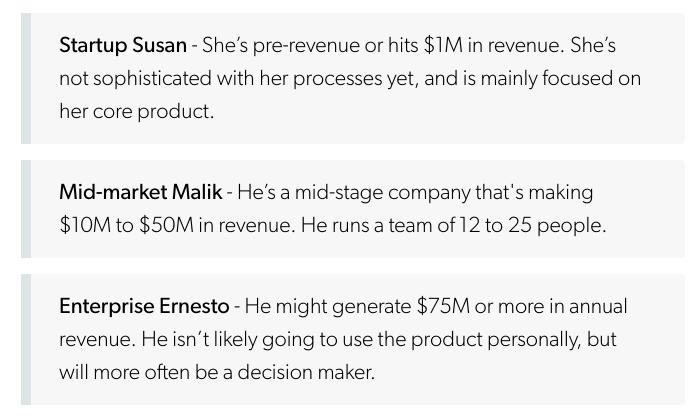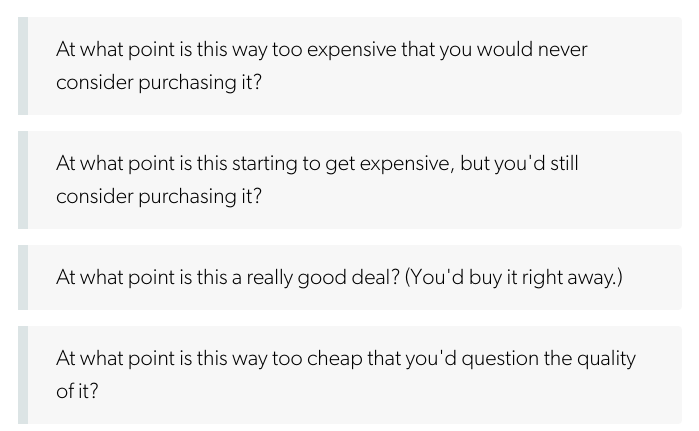We are thinking about our pricing for @convas_io and I've been digging into B2B SaaS pricing. We sell through a low-touch model and currently have one pricing plan, $49/month.
My favorite resources & main takeaways for B2B SaaS pricing below.
My favorite resources & main takeaways for B2B SaaS pricing below.
Favorite resource #1
Stipe Atlas guide "Pricing low-touch SaaS" by @patio11
https://stripe.com/en-se/atlas/guides/saas-pricing
My main takeaways for B2B with a low-touch model:
1. Don't use Pricing as the headline. State the value to the user & the sales message instead e.g. "Pays for itself with..."
Stipe Atlas guide "Pricing low-touch SaaS" by @patio11
https://stripe.com/en-se/atlas/guides/saas-pricing
My main takeaways for B2B with a low-touch model:
1. Don't use Pricing as the headline. State the value to the user & the sales message instead e.g. "Pays for itself with..."
2. Use descriptive names for the pricing plans that help the customer see which plan makes sense for them (Gold, Silver, Bronze doesn't tell the customer much).
3. Charge more. Consider default price points for a low-touch B2B SaaS Monthy $49/ $99 / $249.
3. Charge more. Consider default price points for a low-touch B2B SaaS Monthy $49/ $99 / $249.
4. Only include the most important features on the pricing page. Don't sell unlimited anything.
I have read this guide several times and keep coming back to it. It has several detailed examples that are super useful.
I have read this guide several times and keep coming back to it. It has several detailed examples that are super useful.
Favorite resource #2
How to price your SaaS product by @Patticus in @lennysan's newsletter.
https://www.lennyrachitsky.com/p/saas-pricing-strategy
Main takeaways
- There are two key components to your pricing strategy
1. Your value metric.
2. Your ideal customer profiles and segments.
How to price your SaaS product by @Patticus in @lennysan's newsletter.
https://www.lennyrachitsky.com/p/saas-pricing-strategy
Main takeaways
- There are two key components to your pricing strategy
1. Your value metric.
2. Your ideal customer profiles and segments.
Value metric
- Your value metric is the measure of the value that you are providing to your customer (for B2B this is likely to be money saved, revenue gained, time saved, etc.).
- Price based on your value metric so that your customers pay you based on the value you provide.
- Your value metric is the measure of the value that you are providing to your customer (for B2B this is likely to be money saved, revenue gained, time saved, etc.).
- Price based on your value metric so that your customers pay you based on the value you provide.
- If you can't directly measure the value gained (e.g. money saved), you need to find a proxy for it. To determine your proxy metric, list 5-10 ideas and then ask your customers.
Customer profiles
- Identify groups of customers that you are targeting based on size and/or role.
Customer profiles
- Identify groups of customers that you are targeting based on size and/or role.
- For each customer group list
most valued features
least valued features
willingness to pay
LTV
CAC
Use this as the basis for your pricing plans.
most valued features
least valued features
willingness to pay
LTV
CAC
Use this as the basis for your pricing plans.
Favorite resource #3:
If you want to dig deeper into Patrick Campbell's advice on buyer personas and value metric, check out this @firstround interview with him that takes you through how to identify your buyer personas & pricing plans in more detail. https://firstround.com/review/the-price-is-right-essential-tips-for-nailing-your-pricing-strategy/
If you want to dig deeper into Patrick Campbell's advice on buyer personas and value metric, check out this @firstround interview with him that takes you through how to identify your buyer personas & pricing plans in more detail. https://firstround.com/review/the-price-is-right-essential-tips-for-nailing-your-pricing-strategy/
Main takeaways
1. Start by identifying your buyer personas or groups of target customers. Give each group a name and describe them.
1. Start by identifying your buyer personas or groups of target customers. Give each group a name and describe them.
2. Then collect data for each customer group
- Test feature preferences. List your key features and ask each group which feature is the most/least important.
- Test your value metric. List your alternative value metrics and ask where your customers derive the most/least value.
- Test feature preferences. List your key features and ask each group which feature is the most/least important.
- Test your value metric. List your alternative value metrics and ask where your customers derive the most/least value.
- Test each group's willingness to pay. Ask these four questions and then use that data to plot out a price elasticity curve.
3. Build your pricing page with plans for your main personas based on their preferred features and willingness to pay. Keep pricing plan simple, avoid lists with check-marks.
When it comes to the actual design & copy for the pricing page, check this out by @coreyhainesco https://twitter.com/coreyhainesco/status/1257694698736504833
And some more tips from @Patticus post https://twitter.com/lennysan/status/1323438302897213440
So now we just need to get to work on the pricing for @convas_io 


 Read on Twitter
Read on Twitter



